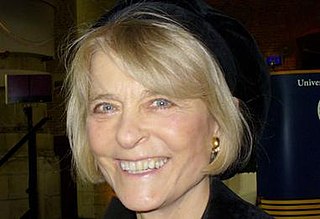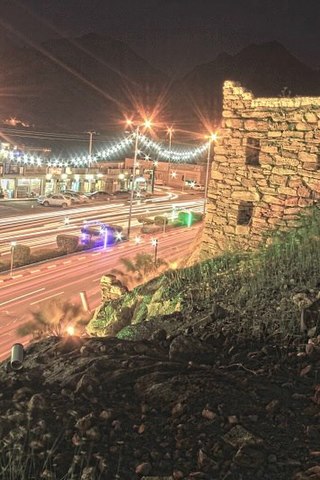Related Research Articles

Religion in pre-Islamic Arabia included indigenous Arabian polytheism, ancient Semitic religions, Christianity, Judaism, Mandaeism, and Zoroastrianism.

Mecca is the capital of Mecca Province in the Hejaz region of western Saudi Arabia and the holiest city according to Islam. It is 70 km (43 mi) inland from Jeddah on the Red Sea, in a narrow valley 277 m (909 ft) above sea level. Its last recorded population was 2,385,509 in 2022. Its metropolitan population in 2022 was 2.4 million, making it the third-most populated city in Saudi Arabia after Riyadh and Jeddah. Around 44.5% of the population are Saudi citizens and around 55.5% are foreigners from other Muslim countries. Pilgrims more than triple the population number every year during the Ḥajj pilgrimage, observed in the twelfth Hijri month of Dhūl-Ḥijjah. With over 10.8 million international visitors in 2023, Mecca was one of the ten most visited cities in the world.
The Quraysh was an Arab tribe that inhabited and controlled Mecca and its Kaaba. Comprising 10 main clans, it included the Hashim clan, into which the Islamic prophet Muhammad was born. By 600 CE, the Quraysh had become wealthy merchants, dominating trade between the Indian Ocean, East Africa, and the Mediterranean. They ran caravans to Gaza and Damascus in summer, and Yemen in winter. They also mined and pursued other enterprises on these routes. They were known for their hilm, which refers to 'steadiness' or 'absence of hotheadedness'. In practice, this meant that they placed business interests first and maintained a measure of unity despite their rivalries.
Banu Abd Shams refers to a clan within the Meccan tribe of Quraysh.
The Treaty of al-Hudaybiya was an event that took place during the lifetime of the Islamic prophet Muhammad. It was a pivotal treaty between Muhammad, representing the state of Medina, and the tribe of the Quraysh in Mecca in March 628. The treaty helped to decrease tension between the two cities, affirmed peace for a period of 10 years, and authorised Muhammad's followers to return the following year in a peaceful pilgrimage, which was later known as the First Pilgrimage.

Patricia Crone was a Danish historian specialising in early Islamic history. Crone was a member of the Revisionist school of Islamic studies and questioned the historicity of the Islamic traditions about the beginnings of Islam.
The Banu Makhzum was one of the wealthy clans of the Quraysh. They are regarded as being among the three most powerful and influential clans in Mecca before the advent of Islam, the other two being the Banu Hashim and the Banu Umayya.

Mount Uhud is a mountain north of Medina, in the Hejazi region of Saudi Arabia. It is 1,077 m (3,533 ft) high and 7.5 km (4.7 mi) long. It was the site of the second battle between the Islamic prophet Muhammad and the polytheists of his tribe of Quraysh. The Battle of Uhud was fought on 19 March, 625 CE, between a force from the small Muslim community of Medina and a force from Mecca, in north-western Arabia.

Meccan Trade And The Rise Of Islam is a 1987 book written by scholar and historiographer of early Islam Patricia Crone. The book argues that Islam did not originate in Mecca, located in western Saudi Arabia, but in northern Arabia. Her views are hugely different from those of historians and orientalist scholars like W. Montgomery Watt and Fred Donner, who have publications detailing trade activities and the struggles between competing Meccan tribes for control over trade routes.

The first Islamic State, better known as State of Medina was the first islamic state established by Islamic prophet Muhammad in Medina in 622 CE under the Constitution of Medina. It represented the political unity of the Muslim Ummah (nation). After Muhammad's death, his companions known as the Rightly Guided Caliphs (Rashidun) founded the Rashidun Caliphate (632–661), which began massive expansion and motivated subsequent Islamic states, such as the Umayyad Caliphate (661–750) and Abbasid caliphate (750–1258).
Hilf al-Fudul was an alliance or confederacy created in Mecca in the year 590 AD, to establish justice for all through collective action, especially for those who were not under the protection of any clan. Because of Muhammad's role in its formation, the alliance plays a significant role in Islamic ethics. Because fudul commonly means "virtuous" the alliance is often translated as League of the Virtuous.
Muhammad, the final Islamic prophet, was born and lived in Mecca for the first 53 years of his life until the Hijra. This period of his life is characterized by his proclamation of prophethood. Muhammad's father, Abdullah ibn Abd al-Muttalib, died before he was born. His mother would raise him until he was six years old, before her death around 577 CE at Abwa'. Subsequently raised by his grandfather, Abd al-Muttalib, and then his uncle, Abu Talib ibn ‘Abd al-Muttalib, Muhammad's early career involved being a shepherd and merchant. Muhammad married Khadija bint Khuwaylid after a successful trading endeavour in Syria. After the death of Khadija and Abu Talib in the Year of Sorrow, Muhammad married Sawdah bint Zam'a and Aisha.

The Kaaba, sometimes referred to as al-Ka'ba al-Musharrafa, is a stone building at the center of Islam's most important mosque and holiest site, the Masjid al-Haram in Mecca, Saudi Arabia. It is considered by Muslims to be the Bayt Allah and is the qibla for Muslims around the world. The current structure was built after the original building was damaged by fire during the siege of Mecca by Umayyads in 683 CE.
Sakhr ibn Harb ibn Umayya, commonly known by his kunyaAbu Sufyan, was a prominent opponent-turned companion and father-in-law of the Islamic prophet Muhammad. He was the father of the first Umayyad caliph Mu'awiya I and namesake of the Sufyanid line of Umayyad caliphs which ruled from 661 to 684.

Bareq, is one of the governorates of Asir in the north-west of the region, 120 km (75 mi) north of Abha. It occupies a distinct location midway between Tihama and Asir, 412 m (1,352 ft) above sea level. With an estimated population of 75,351, it is well off economically; the city has grown rapidly and has many government services and public utilities available. It is one of Asir's winter resorts because of its natural environment and mild winter weather. Bareq has valleys.
Bariq was founded in 220 AD. It is part of the territory known historically as Yemen, which dates back to the second millennium BC. It was inhabited by immigrant tribes of southern Yemen called Bariq, who belong to the ancient tribe Al-Azd which has many clans linked to it.
The postulation that Allah originated as a moon god first arose in 1901 in the scholarship of archaeologist Hugo Winckler. He identified Allah with a pre-Islamic Arabian deity known as Lah or Hubal, which he called a lunar deity. This notion has been dismissed by modern scholarship as being without basis.
Zuhayr ibn Janab ibn Hubal al-Kalbi was a chieftain of the Banu Kalb tribe and a pre-Islamic Arabic warrior poet. Much of his biography relies on semi-legendary accounts, but it is apparent that he lived in the early 6th century. He led not only the Kalb, but the entire Quda'a tribal confederation. During his one-time alliance with the Aksumite viceroy Abraha, Zuhayr quelled a revolt by the Taghlib and Bakr tribes, capturing their chieftains, including Kulayb ibn Rabi'a. Later, he destroyed the pagan sanctuary of the Ghatafan tribe, which rivaled the Ka'aba in Mecca. Traditional Arab sources noted that Zuhayr lived an extremely long life, and finally died by suicide after he was disobeyed. His descendants, particularly those belonging to the family of Bahdal ibn Unayf, would later hold high positions under the Umayyad Caliphate.
The Muslim–Quraysh War was a six-year military and religious war in the Arabian Peninsula between the early Muslims led by Muhammad on one side and the Arab pagan Quraysh tribe on the other. The war started in March 624 with the Battle of Badr, and concluded with the Conquest of Mecca.

The Attack on Jeddah occurred in 1541 and was the last attempt by the Portuguese to capture the city.